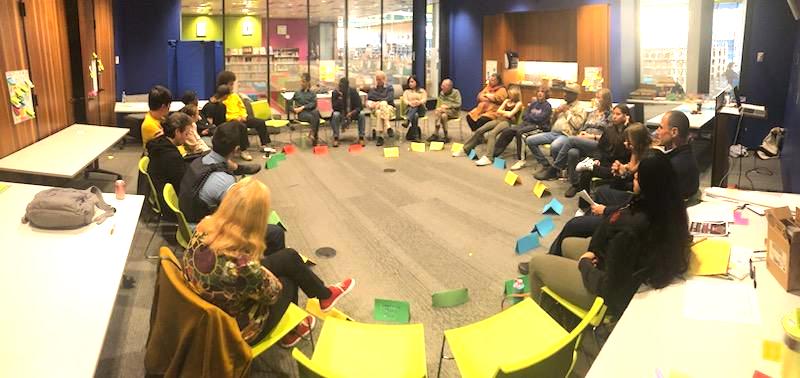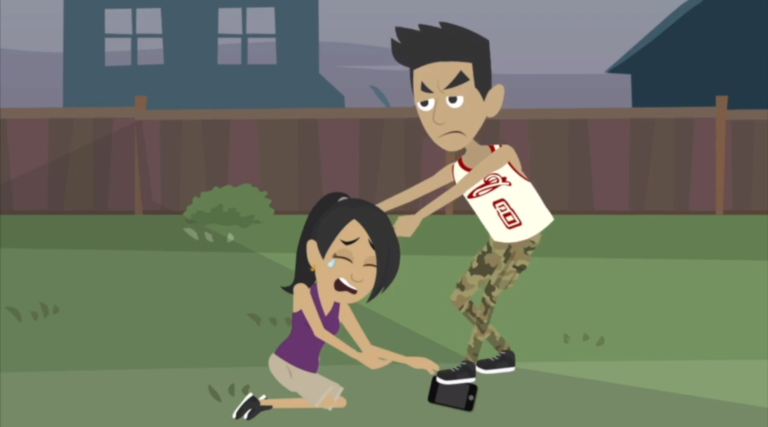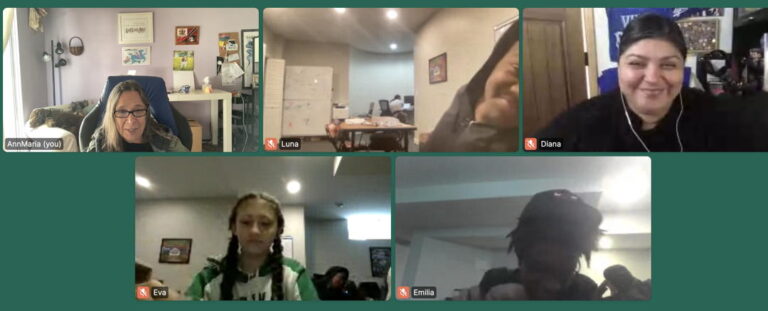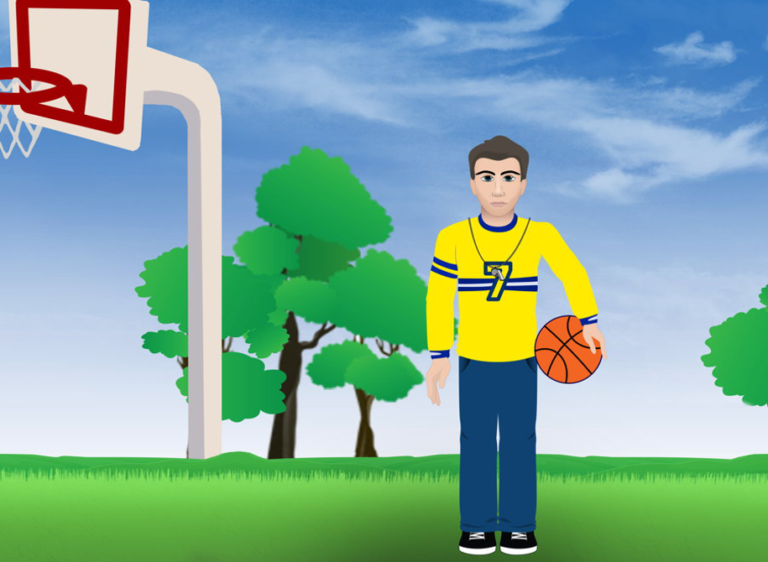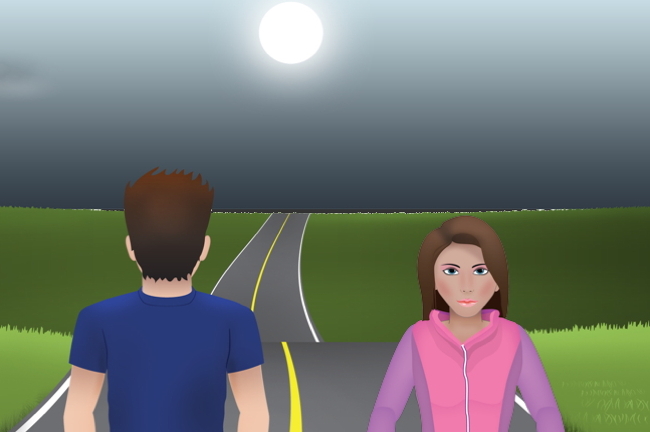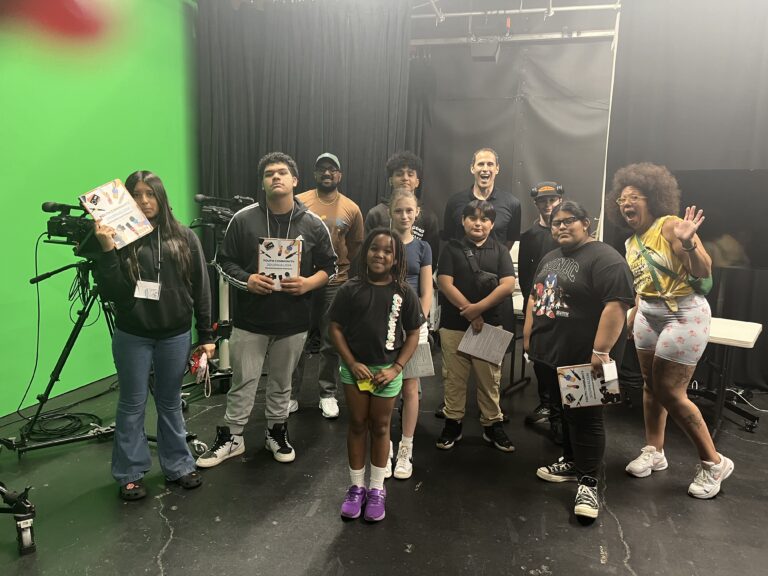Big Solutions Require Lots of Small Steps
The most underrated quality of success is determination.
We had our second community solutions with youth workshop on Nov. 18 at the Walker Library in Minneapolis. It was better than the first one in July (and the first workshop went great). This time, we had more youth, more engagement, more ideas, and more lessons learned.
Thirteen young people participated from four schools. Six eighth graders, three ninth graders, three sixth graders, and one fifth grader. They ranged in age from 10 to 14.
We had 10 community elders. They included a retired judge, a neighborhood association president/tech company CEO, a Minneapolis Public School principal, a community crime specialist, a neighborhood support specialist, a retired librarian and small business owner, a local musician and community builder, a former administrator, a sergeant in the Minneapolis Police Department, and a retired businessman.
The solutions leadership team for the workshop was Ella Baker eighth-grade teachers Anna Lehn and Sam Quincy, restorative practices leader Manu Lewis, World Savvy professional learning facilitator Molly Carina Dengler, and me (Strong Mind Strong Body Foundation board chair and chief content officer).
The workshop, organized by the Strong Mind Strong Body Foundation, was five hours (11:30 a.m.-4:30 p.m.). This was our agenda.
11:30-11:35 a.m.: Welcome
11:35-11:45 a.m.: Introductions/team building
11:45 a.m.-12:15 p.m.: Strength/asset training
12:15-12:35 p.m.: Core value building
12:35:12:45 p.m.: Break
12:45-1:30 p.m.: Youth empowerment exercise
1:30-2 p.m.: Lunch/youth engagement about solution program
2-2:25 p.m.: Youth identify community issue to solve
2:25:2:30 p.m.: Break
2:30-3 p.m.: Youth meet adult community influencers
3-3:30 p.m.: Intergenerational talk on youth-led solutions
3:30-3:35 p.m.: Break
3:35-4:05 p.m.: Adults/youth create solution action plan
4:05-4:25 p.m.: Share solution findings
4:25-4:30 p.m.: Closing, thanks, next steps
The format was similar to the first workshop, with a focus on community building and creating youth-led community solutions.
1. We started with youth team-building exercises.
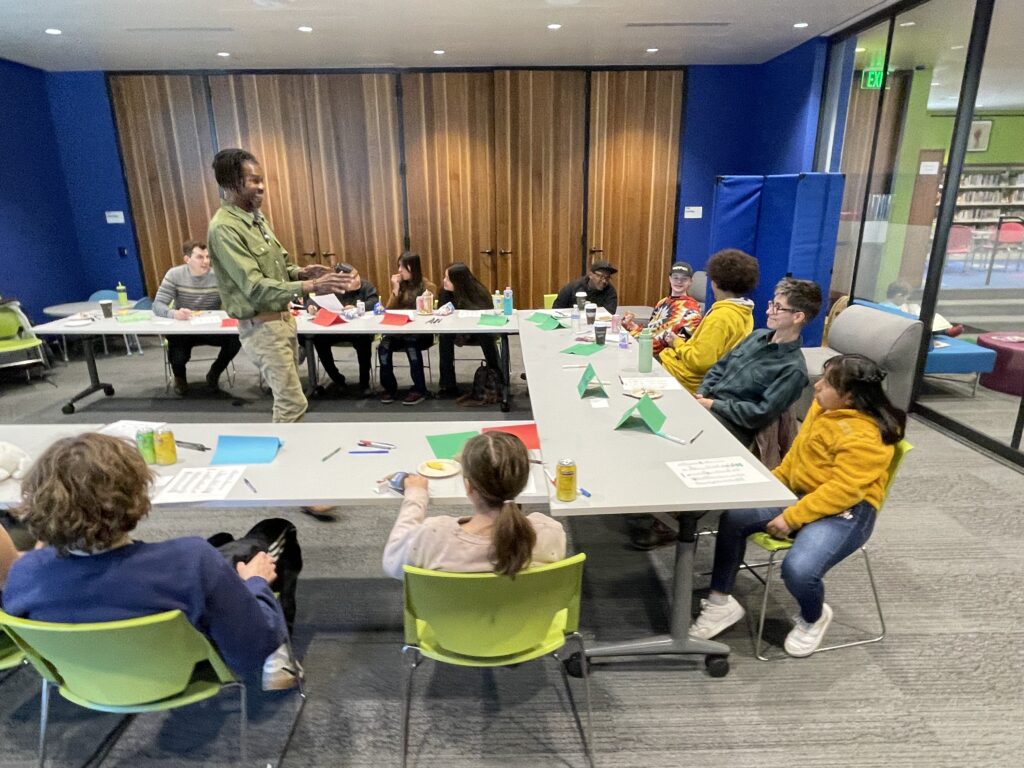
After introductions, we had strength/asset training, core value training, and youth empowerment.
Youth identified having the following strengths and assets:
💪 Reading
💪 Leadership
💪 Good communication with others
💪 Being a good listener
💪 Math
💪 Friendly
💪 Being kind, helpful, and responsible
Youth identified these core values:
✅ Responsibility
✅ Health
✅ Happiness
✅ Flexibility
✅ Forgiveness
✅ Leadership
✅ Communication
✅ Honesty
✅ Loyalty
Then, we had a creative writing exercise to get students excited about the creative process and using their imagination. Each youth chose one of these four prompts.
1. Write about how you would like your life to be in 15 years. Include where you live, what you do (work, school, both), your personal life, how your community looks, how the world looks.
2. Describe rain to someone who has never seen or touched it. Use at least five adjectives in your description.
3. Write a thank you note to someone from history or someone in your life who is important to you. Include three reasons why this person is important and how they made or make the world a better place.
4. Make a list of five things that make you happy. Explain why each thing makes you happy.
After writing, the students read what they wrote. The goal was to get them comfortable with sharing their ideas with others. There were a lot of creative answers.
Then, we had each youth choose a different prompt, write, and share again. The answers were even better the second go-round, and most of the youth got more comfortable sharing them.
2. Youth identified a local issue they want to solve.
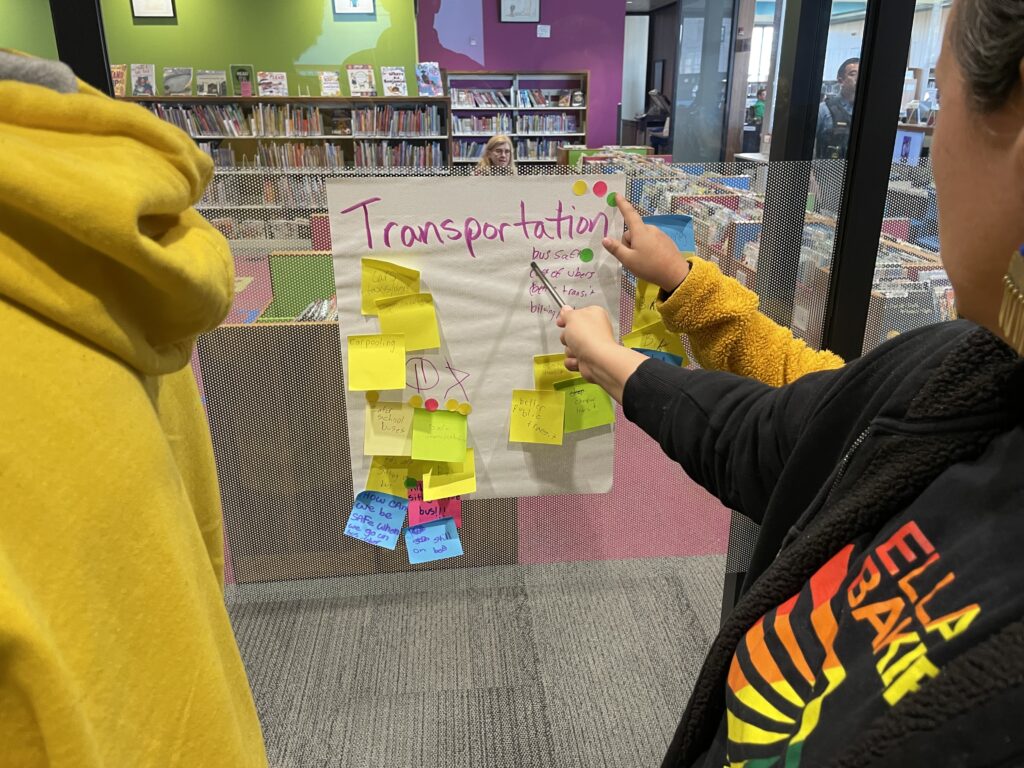
Our community solutions conversation began with youth sharing their hopes and dreams for the community across five topic areas.
1. Diversity
2. Safety
3. Transportation
4. Environment
5. Housing/Homelessness
These topics were based on the issues youth discussed the most during our team building. Youth shared over 90 hopes and dreams.
They narrowed it down to two.
1. Guns and reducing gun violence
2. Public transportation and increasing public safety
Youth voted. Guns and reducing gun violence was chosen as their top “hope/dream” issue to address for their solutions project.
3. Youth met community elders.
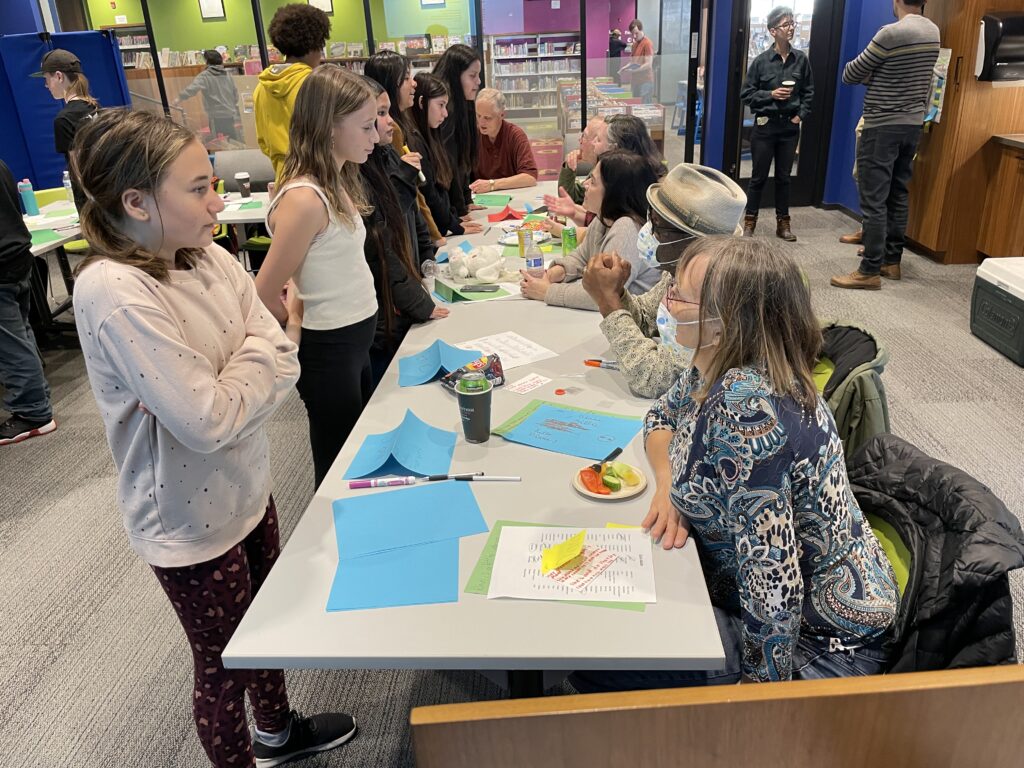
We welcomed elders to our workshop and shared that youth chose guns as their solution issue. Then, we started community building. You’ve heard of speed dating? This was speed community building.
The elders sat in chairs around a U-shaped table. One youth stood in front of each elder. They spoke for one minute to get to know each other. After one minute, each youth moved to the next elder until everyone had spoken to everyone.
Bringing neighborhood youth and community stakeholders together is how they get to know one another. This is how we build trust with community stakeholders and youth. Trust is the first step to creating community solutions, and trust is essential to engage in important discussions and build consensus to take action.
4. We had an intergenerational circle of stakeholders.
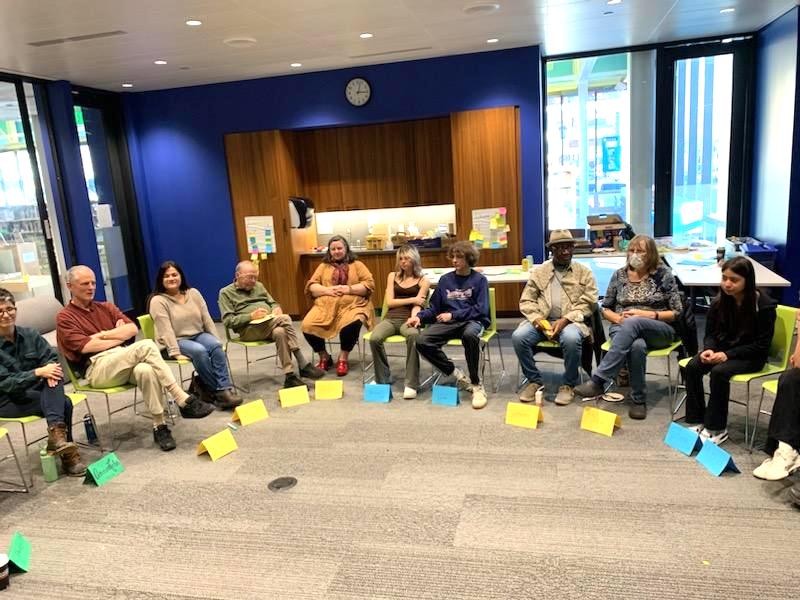
Youth and community influencers talked about guns, the issue youth chose to create solutions. We went around the circle, and everyone shared their thoughts on guns. This was a frank, powerful, and eye-opening conversation with a lot of wisdom, knowledge, and emotions shared by youth and elders.
These were some of the insights.
Most youth today, especially youth over the age of 13, have had some personal experiences with guns. They have had guns pulled on them or know someone who has had a gun pulled on them or been shot. They feel that nowhere is safe because of guns. Everywhere is dangerous.
More positive solutions and actions are the best way to solve problems, and more positive solutions and actions are needed to reduce gun violence.
It’s too easy for people of any age to get guns. Gun violence is out of control. It’s driven by money, greed, and power.
We need healthier relationships to curb the violence. Building healthy relationships allows people to articulate if harm was done. This is the essence of restorative practices.
We live in a violent world where a culture of violence is glorified. We need to provide youth with tools to repair harm, and de-escalate. We need to promote the virtues of self-control, and self-discipline. We have to revisit how we see humanity.
To reduce violence, we need to mitigate violence.
We need better gun education and gun laws. Guns are an addiction today.
Kids are scared and traumatized. They also are angry and brave, and they don’t like guns or the way gun violence has become an existential crisis.
“Guns are something that I wish I could go back in time and make them disappear,” said one youth.
Another well-informed youth explained how some people don’t understand the Second Amendment was written to protect Americans’ right to establish militias to defend themselves, not to allow individual Americans to own guns and kill each other.
Things need to change. Youth want to create change.
5. We broke into two groups to brainstorm solutions for the issue using the knowledge to action (K2A) framework.
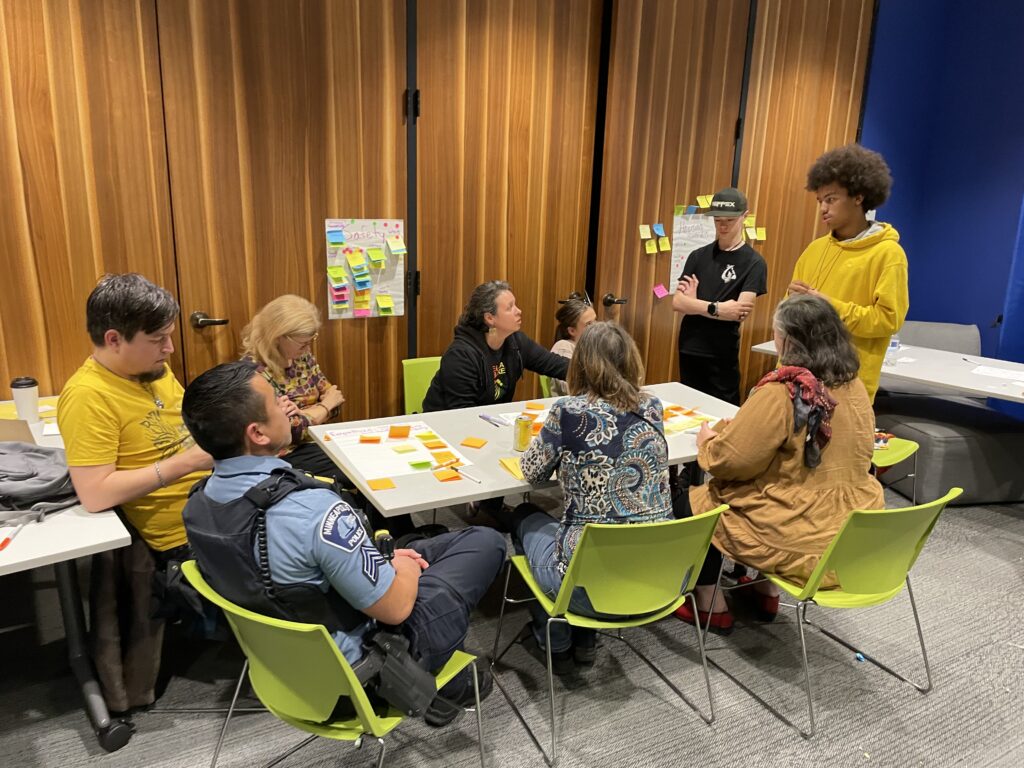
The intergenerational groups (youth and adults mixed together) used the K2A process to explore the issue of guns and reducing gun violence. Anna Lehn and Molly Dengler each led a group in the K2A process, which has three steps.
🎯 Empathize—>This is where we build knowledge and common understanding.
🎯 Root Causes—>This is where we define the issue and what’s really going on.
🎯 Solutions and Action Steps—>These are based on strengths and needs.
The goal is to get to a single solution with action steps for how we (at the local level in Minneapolis) can create solutions to reduce gun violence now and into the future. Youth will lead this process and create change with support from the community elders.
Molly and Anna both led strong discussions and guided their groups from empathy to root causes to solutions and action steps.
Gun solution ideas from Anna’s group:
🎯 Supervised instruction
🎯 Gun safety curriculum
🎯 Enforcing gun licenses
🎯 Building community, feeling connected
🎯 Creating political consensus
🎯 Occupying your life (so too busy for guns)
🎯 Establishing proper channels for buying
🎯 Safe storage
🎯 Easy access to mental health help
🎯 Background checks
🎯 Doing other activities
🎯 Increasing the age of ownership to 30-40

Gun solution ideas from Molly’s group:
🎯 Increase talk and action about guns
🎯 Strengthen community relationships
🎯 Safe storage
🎯 Write letters to policymakers
🎯 Discourage youth from buying guns
🎯 Felon gun ownership consequences
🎯 Background checks before selling guns
🎯 Alternatives for solving disputes
🎯 Licenses to own/use guns with re-licensing requirements
🎯 Gun education, responsible use and ownership
🎯 Requirements for gun storage and consequences
🎯 Restrict access if prior risk (domestic assault, suicide risk, etc.)
🎯 Requirements for gun storage in safes, especially if minors are in the home
🎯 Ban on assault and automatic rifles and guns
🎯 More varied and better responses to crime and mental health
🎯 Stricter gun regulations and mandatory classes
🎯 Better and more youth programming
🎯 Better and more crime prevention strategies — cops come in after violence has happened most times
Both groups had great ideas.
6. We reconvened, and each group shared their solution ideas.
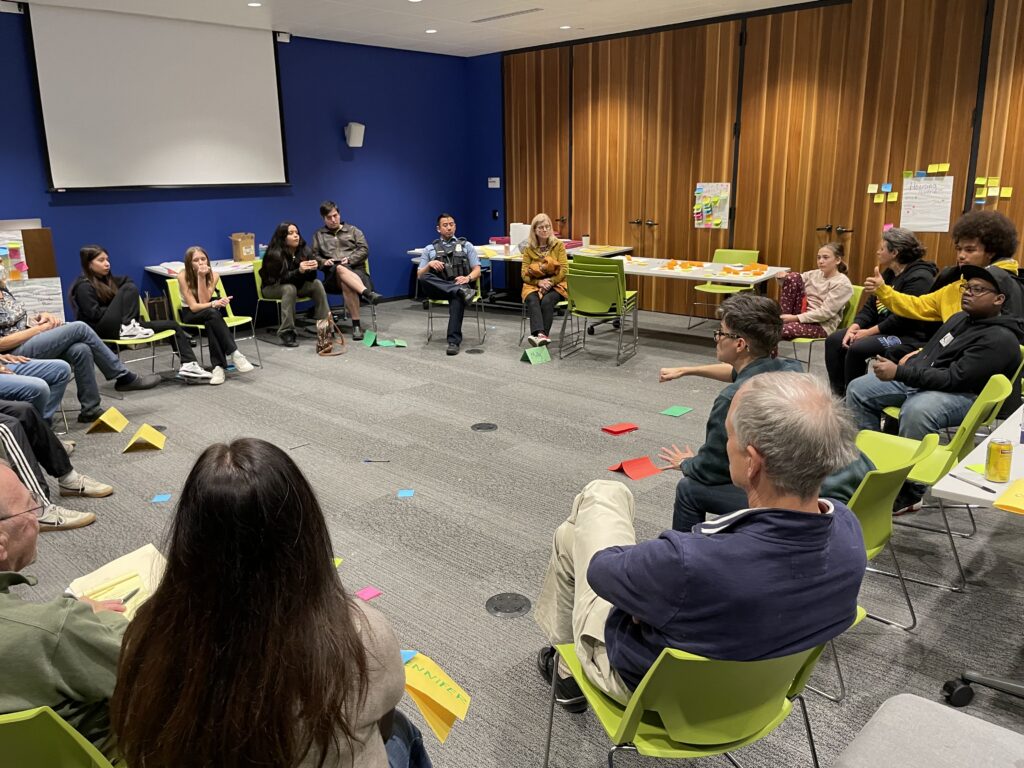
We did not have as much time at the end of the workshop as expected since our talking circle ran longer than scheduled. This was due to so much engagement and passion from the group, especially the youth.
As a result, we had to compress the end of our workshop, and the “next steps”/action plan aspect did not have as much time for discussion compared to the prior steps.
Too much engagement is better than not enough engagement. We learned some valuable lessons, and we will use the lessons to keep making the program better.
We wrapped up the workshop and gave each youth a $50 Target gift card for their participation.
💡A Lightbulb Moment
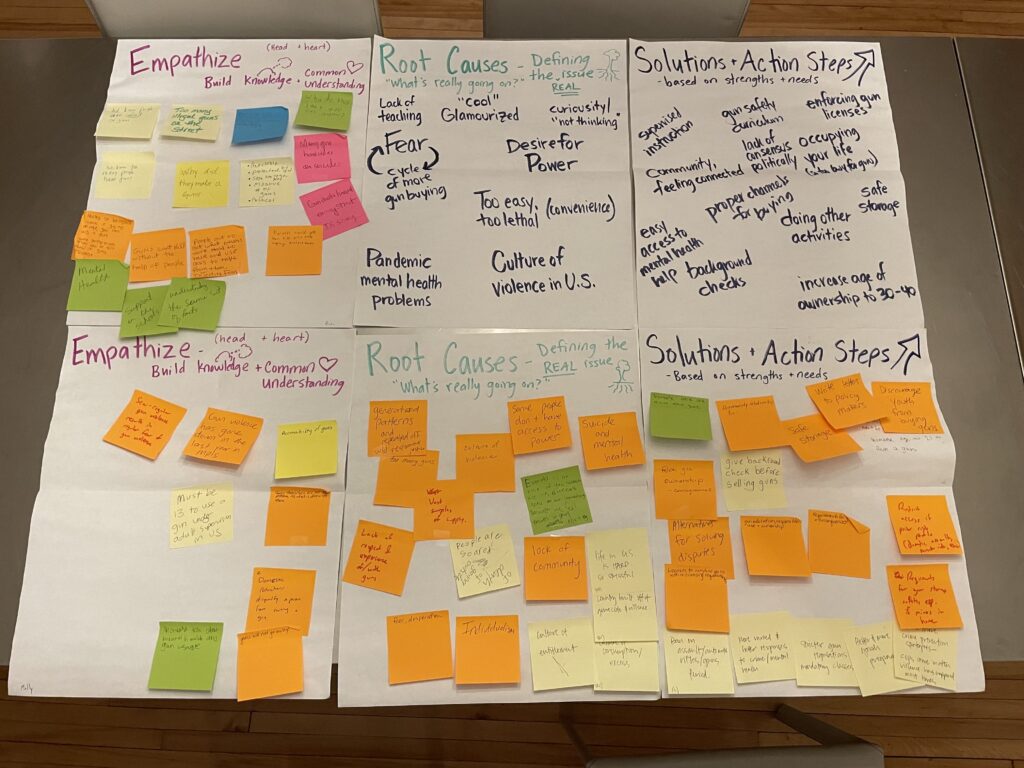
Gun education was a common theme throughout the day and sparked some big ideas. Now we have to turn our ideas into action.
What if we could create a Gun Education program (Gun Ed) the way we have a Driver’s Education program (Driver’s Ed)?
Most states (currently 37, according to DriversEd.com) require a driver’s education course to get a driver’s license. The requirements vary by state, but generally include:
- Classroom instruction: 8–56 hours
- Behind-the-wheel training: 6 hours
- Written test: Pass the knowledge test
- Driving practice: Practice with a licensed adult
Some states may offer benefits to those who complete driver’s education. For example, they may allow you to get a permit at a younger age, require fewer behind-the-wheel hours, or let you skip the driving test.
Once people get a driver’s license, they have to have a registered car to drive legally.
Why not follow a similar model for guns?
Gun education could offer classroom instruction, gun training, a written test, and gun practice. Then, people would need to take a written and shooting exam to get a gun license. If they own a gun, it would have to be registered.
People need a license to drive. Shouldn’t people need a license to use a gun?
Biggest Lessons We Learned
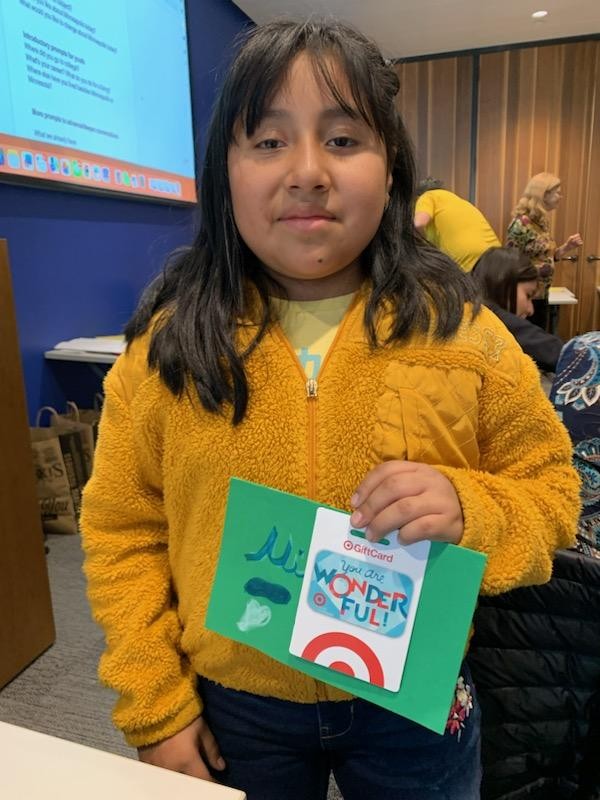
The biggest takeaway from the workshop is that we can shorten the total workshop time to three hours.
Students started losing energy, and we can tighten up the first half of team building and have the rest of the time with youth and elders working together to create solutions and action plans, which is the best (and most important) part of the workshop.
This is how future workshops will run.
👉 Community building (play a game) and issue identification: 45 minutes
👉 Speed meeting youth-elder: 25 minutes
👉 Lunch with youth and elders: 20 min
👉 Circle of stakeholders: 30 minutes
👉 Knowledge to action: 45 minutes
Closing and next steps: 15 minutes
Taking action and creating positive change is the mission of our program. We want to make sure that the action planning portion of our workshop is given the time it deserves to have a meaningful discussion with youth and elders. We don’t want to rush the process or have anyone feel rushed.
We want to give the youth more time to voice their opinions. They have good ideas.
We also are going to change our approach after the workshop to build on our momentum and keep youth engaged. Instead of having online meetings, as we did after the last workshop with little engagement, we will meet the youth where they are, at school (before, during, or after school), to increase engagement.
🏆 Highlights of the Workshop

👏 The hope and positive energy of youth
👏 A diverse group of stakeholders
👏 The intergenerational circle
👏 Solutions knowledge to action (K2A) work
👏 Youth participants sharing their thoughts and ideas
👏 Hearing what kids have to say about their lives and solutions and their understanding of our community
👏 Kids sharing their viewpoints and experiences with gun violence
👏 Youth engaging with elders and getting to interact with older people in the community
👏 Youth asking if we can have more workshops like this
A Lot of Positive Feedback
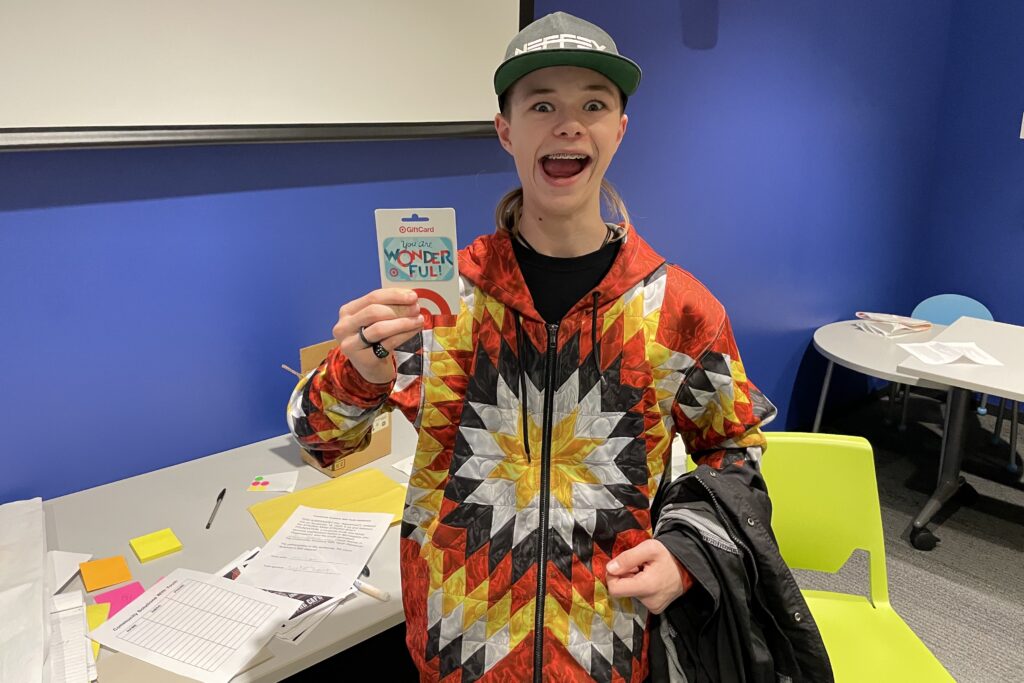
Here is what participants had to say about the workshop.
It is a great opportunity to connect with and engage with youth.
It’s an amazing experience. I 100 percent suggest it to anyone who wants to speak out about problems in their community.
It was a good opportunity to hear firsthand the perspectives of some of the youth, and other community members, and co-imagine possibilities.
It’s a great experience.
Next Steps
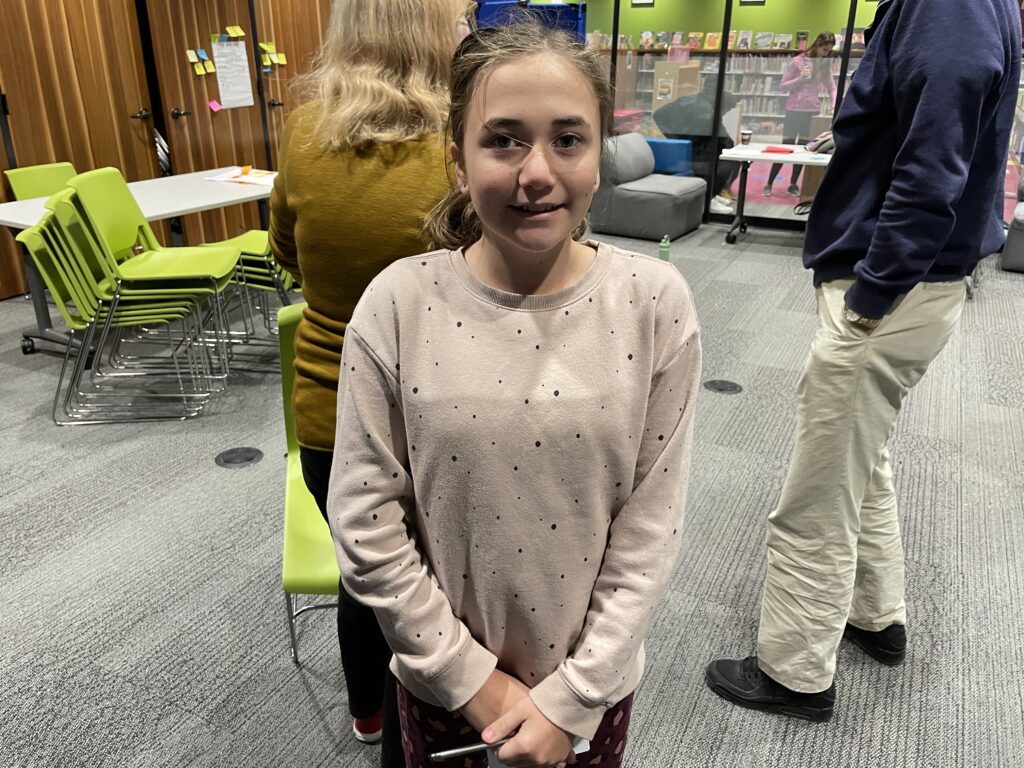
Creating solutions is not easy. But youth have good ideas about how to reduce gun violence and other important community issues. We plan to help them put these ideas into practice to create a better future.
This is our plan to do that.
1. We will launch a youth journalism program.
Our youth journalism program will teach students the fundamentals of journalism and show students how journalism can inform and engage the public to create solutions. The goal of our journalism program is to elevate and empower youth voices on important community issues, such as reducing gun violence. We believe excellent journalism can create transformative change. By reporting on important issues affecting communities and showing compassion, we can shine a light on injustice, foster informed dialogue, and inspire action.
The journalism program will start at Ella Baker School and have a digital news service called Ella Baker News. This will be a student-led website that publishes 5-10 student stories monthly. These stories will be news stories, analysis, and commentary. They will promote informed discussion and spark community action. They will be a vehicle for students to advocate for solutions to raise awareness of local issues and present solution ideas to build consensus in the community.
We will have a paid micro-internship journalism program with local media partners to give youth real-world work experience and training and raise more awareness about community solutions. With our youth journalism program, youth will gain valuable skills that can benefit them throughout their life.
2. Students will host public community solutions forums with public officials.
These forums will be led by youth and bring the community together. The forums will give youth an opportunity to interact with public officials on local issues, e.g. reducing gun violence. Youth will engage with civic leaders, inform the public, and encourage positive action.
3. Students will help organize public community pop-up markets.
These markets will bring have local small business vendors, food, music, arts and crafts, and information and resources on solutions for local issues (e.g., reducing gun violence). Students will help organize and run the markets. As part of the markets, we will create and sell merchandise (T-shirts, sweatshirts, etc.) with an inspiring design, logo, and message (Flex Our Humanity©). All proceeds will be donated to an organization, group, or program that is working on solutions for important issues (e.g., gun violence prevention). These markets will build community, promote humanity, teach entrepreneurship to youth, and create a long-term sustainability model for the community solutions program.
🌲Communities Grow From Local Roots
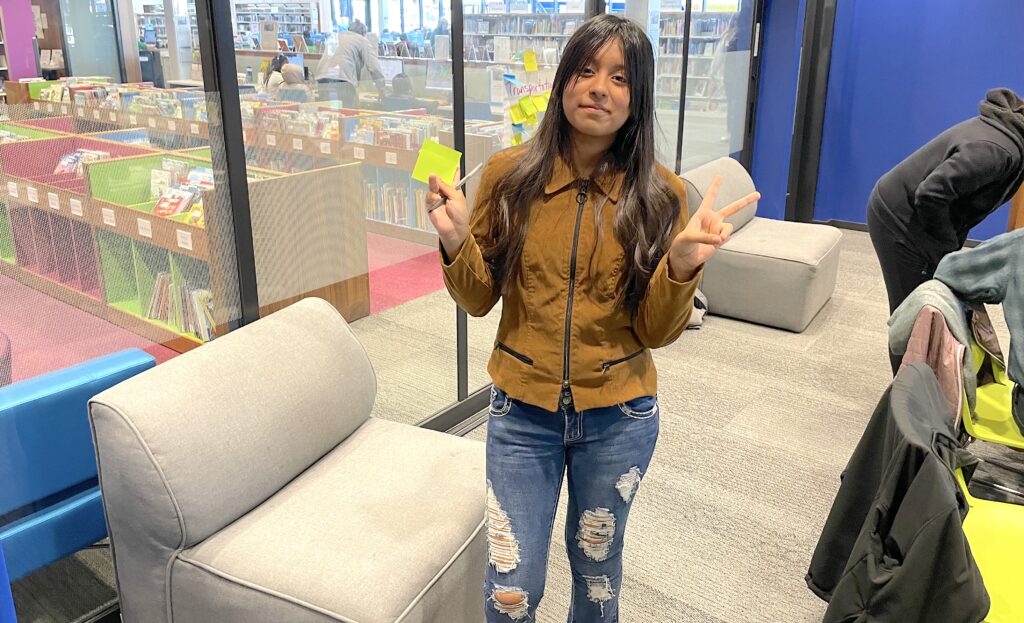
The mission of the Strong Mind Strong Body Foundation is to close the opportunity gap through education. We are creating our community solutions program with youth to help young people feel safe, seen, and heard and give them the tools, resources, and opportunities they need to create the future they want to see.
Creating opportunities for youth and families is what we do. We are grateful to have this opportunity.
Youth have to lot to give to make our society stronger. But they face a lot of obstacles in today’s world, and it can be difficult to navigate them to find their purpose and reach their full potential. We want to make the journey easier for youth and help guide them to paths that will lead to lifelong success and generational prosperity for them, their families, and their communities.
The journey starts with one step and continues with lots of little steps to achieve success. The most underrated quality of success is determination.
Youth are determined to succeed. We are determined to help them.
If you would like to support our community solutions with youth program, you can donate here.
This article was first published on LinkedIn.
